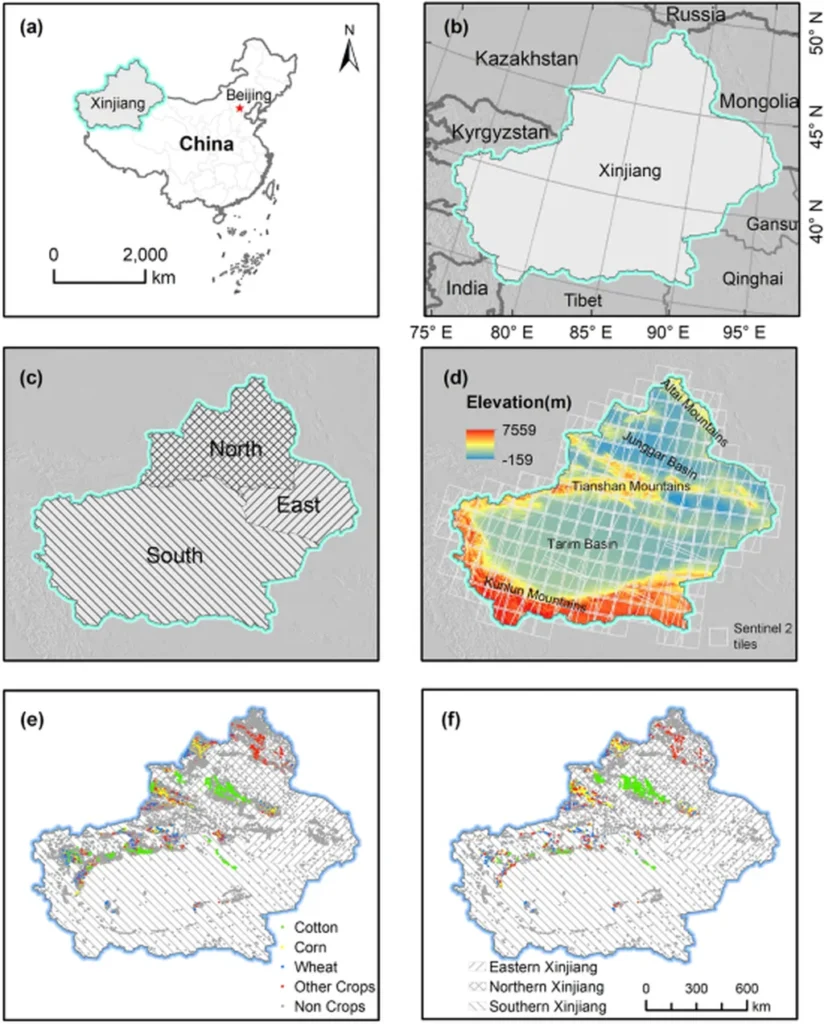In the heart of China’s arid expanse lies the Tarim River Basin (TRB), a critical cotton production hub and a region where water is as precious as the crops it nourishes. Here, the accuracy of cropland mapping is not just a matter of academic interest but a pressing need for sustainable agricultural management and food security. A recent study published in *Smart Agricultural Technology* and led by Ziye Liu from the State Key Laboratory of Efficient Utilization of Agricultural Water Resources at China Agricultural University, sheds light on the challenges and opportunities in capturing the dynamic patterns of cropland area using state-of-the-art remote sensing technologies.
The study evaluated seven leading remote sensing-based cropland products—CACD, CLCD, ESA-CCI, GLASS-GLC, MCD12Q1, CLUD-A, and GLAD—over a 20-year period from 2000 to 2020. The findings reveal a landscape of discrepancies and inconsistencies. While the temporal variations among the datasets showed good inter-dataset consistency, with a mean correlation of 0.84, the multi-year average standard deviation of these estimates was substantial, representing 77.6% of the actual cropland area. This inconsistency translates to significant errors in cropland area estimation, with mean percentage errors reaching up to 222.4%.
Among the products evaluated, the MODIS land cover product (MCD12Q1) emerged as the top performer. “MCD12Q1 demonstrated the best overall performance, with the lowest root mean square error (169.5 km2) and mean percentage error (6.5%),” Liu noted. This superior performance is likely due to its integration of census data, which better identifies abandoned croplands—a common feature in the TRB.
However, the study also highlighted the challenges in accurately capturing agricultural landscape changes. Even the lowest trend error among all products (12.2 km2/yr) was comparable to the mean reference trend (15.3 km2/yr). This underscores the need for more precise and reliable remote sensing tools to support agricultural decision-making in arid regions.
One of the study’s novel contributions is the introduction of the Vegetation Interference Index (VII) as an assessment tool. This index revealed that mixed vegetation patterns had a stronger influence on cropland mapping than topography, providing a new lens through which to view and address the complexities of agricultural landscapes.
The implications of this research are profound for the agriculture sector, particularly in arid regions where water resources are scarce and agricultural practices are highly sensitive to environmental changes. Accurate cropland mapping is essential for optimizing water use, managing land resources, and ensuring food security. The study’s findings emphasize the importance of selecting the right remote sensing products for precise agricultural management.
As the agriculture sector continues to evolve, the integration of advanced remote sensing technologies and innovative assessment tools like the VII will be crucial. This research not only highlights the current limitations of existing cropland products but also paves the way for future developments in remote sensing technologies. By improving the accuracy and reliability of cropland mapping, we can better support sustainable agricultural practices and secure food supplies for the future.
For stakeholders in the agriculture sector, the message is clear: the choice of remote sensing products can significantly impact the effectiveness of agricultural management strategies. As Liu and his team continue to refine their methods and tools, the hope is that these advancements will translate into tangible benefits for farmers, policymakers, and the broader agricultural community.

